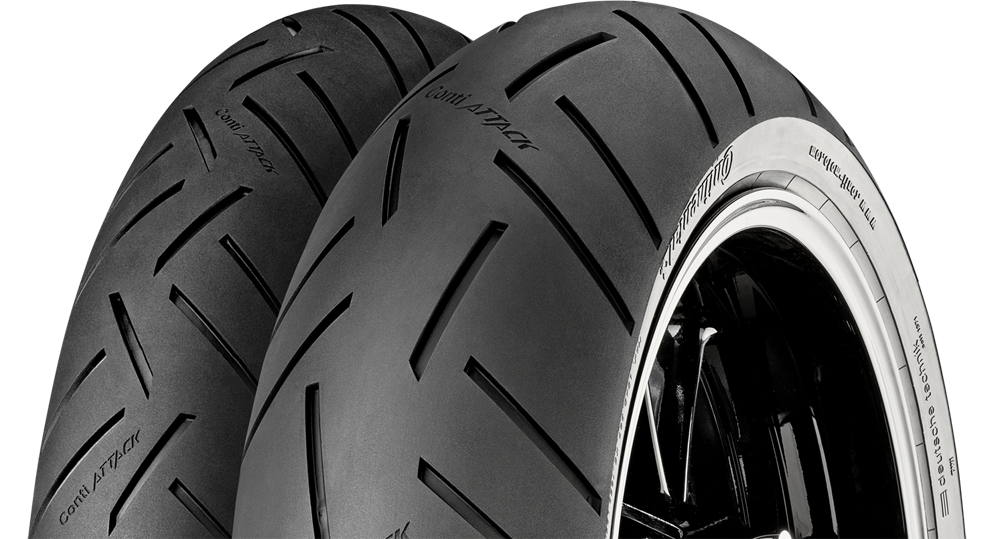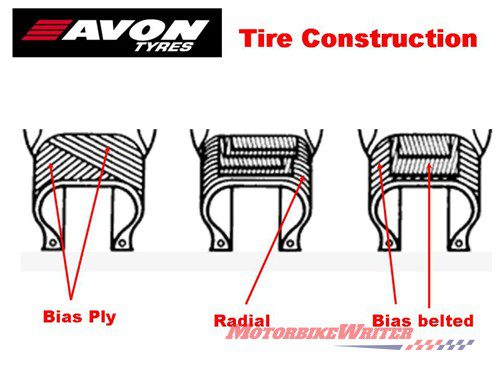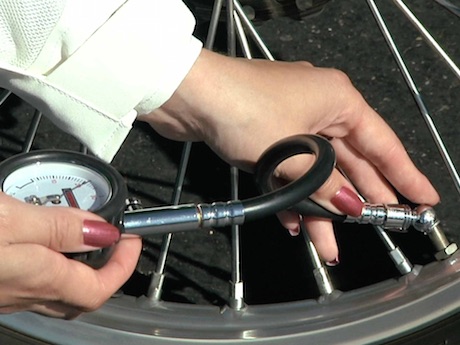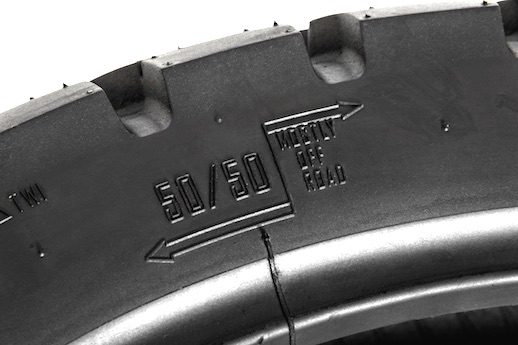Do you know what the codes on the sides of your tyres mean, what sort of tyres you are riding on and how they are made?
Motorcycle industry veteran Dale Schmidtchen takes a look at the construction of your motorcycle tyres in part two of a two-part insight into tyres.
Since the rubber coated pneumatic tyre was first mass produced in the late 1800s, there has been constant and continual development of the compound and construction, which continues to the present day.
Despite the radial tyre being invented decades before, (patented in 1915 by Arthur Savage if San Diego) it took until the 1970s for radial tyres to become a common product for cars and over another decade for motorcycles to follow suit.
Tyre plies
Pre radial, bias or cross ply tyres were the only option.
A bias ply tyre consists of multiple rubber plies over lapping each other. The term “bias ply” refers to the internal construction of the tyre. In a bias ply tyre, the cords (plies) run at a 45-degree angle from bead to bead. This diagonal pattern is criss-crossed with each layer of ply cord and creates a very rigid structure.
Bias ply tyres are strong, but the rigidity offers some interesting handling characteristics if you’re accustomed to riding on radial tyres. The rigid construction means that bias ply tyres do not conform to the road surface as efficiently as a radial tyre. This creates a “wandering” sensation, as the tyres tend to follow the ruts and breaks in the pavement. This wandering is not hazardous, but it definitely requires the rider to pay more attention, especially at highway speeds.
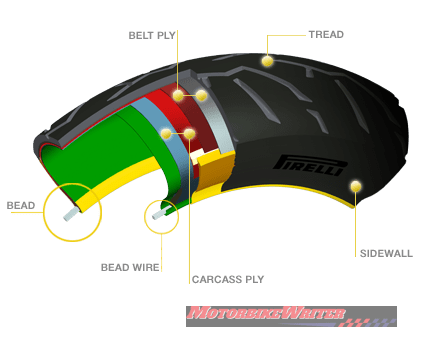
Radial tyre construction is not so simple and varies between manufacturers but as a definition of this design, the cord plies are arranged at 90 degrees to the direction of travel, or radially (from the center of the tyre). Radial tyres, have many advantages of radial tyres over bias ply tyres.
These include more flexible sidewalls, reduced fuel consumption due to less rolling resistance, a softer ride because of the layout of the tyre’s plies and because of the flex of the sidewalls more stable contact with the road service. In general they are steel belted which results in tougher overall construction, longer tread life, wider ‘footprint’ as they can deform more and reduction in tyre heat generated.
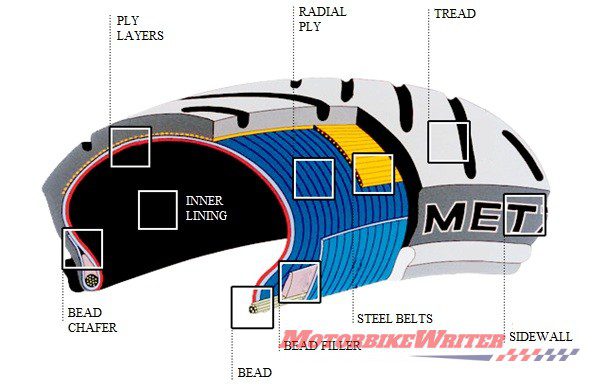
Please note that DuPont’s wonder material, Kevlar can also feature heavily in radial tyre construction and is favourable due to the strength, rigidity and light weight offered, but the transfer of heat in the tread is reduced.
It is recommended to stick to manufacturer’s recommended pressures, but an increase in tyre temperature can be achieved with more pressure in a bias ply and less pressure in a radial construction.
Click here for more details on correct tyre pressures.
One breakthrough with radial tyres has been the Mono Spiral Belt construction. Mono Spiral Belt (MSB) construction means that a continuous single strand is wrapped around the circumference of the tyre. This one-piece construction eliminates overlapping of belts, seams and joints. An MSB tyre is lighter than conventional multi-cross belt construction. It has more stability since it minimizes heat generation inside the tyre and provides high bump absorption.
It also assists greatly at high speed, as it resists the tyre ‘growing’ due to centripetal and centrifugal forces.
Tyre codes
This allows high performance radial motorcycle tyres to be speed code rated up to ZR. The speed rating code indicates the maximum speed at which a tyre can carry the load indicated by its load index under the conditions of use specified by the manufacturer.
If you are unsure of your tyre’s speed rating, please check with your local dealer for more specific information.
To decipher the main information on a sidewall of a tyre, please consider the following.
If your tyre is a 190/55ZR17, the 190 relates to the nominal section width of the tyre in millimetres, 55 relates to the sidewall, and is an aspect ratio of sidewall height in proportion to the tyre width. ZR is the speed rating and 17 indicates the wheel diameter in inches.
If you are deciding to fit used tyres, please note the possibility of a date code on the tyre, which will be typically a 4 digit stamp in the sidewall rubber. Eg: 2815 would indicate a tyre built in the 28th week of 2015.
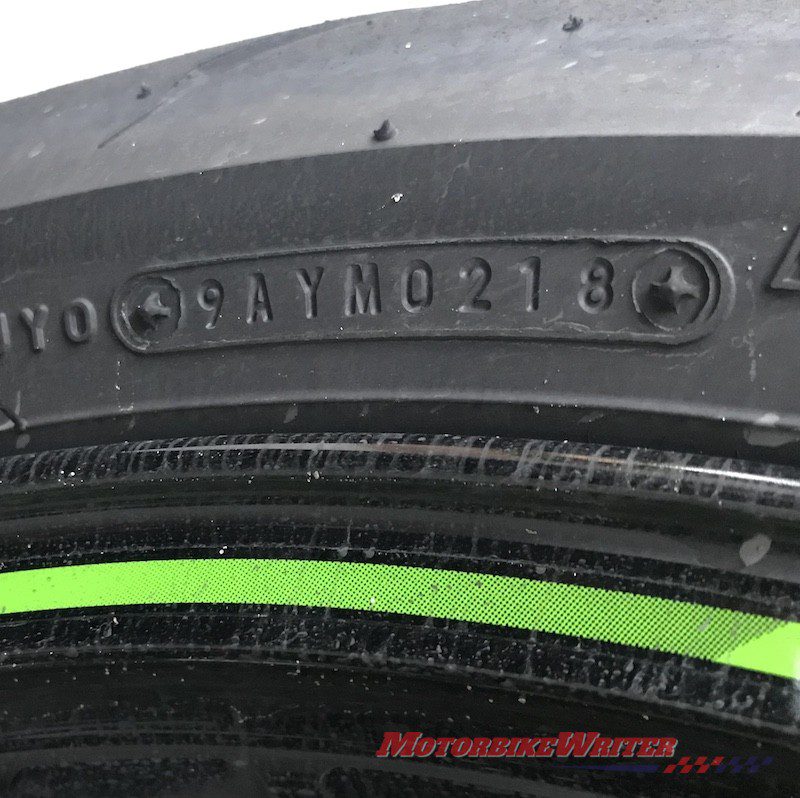
Tyres, even if unused, do not last forever and it is unwise to use a tyre that is over 5 years old. More than likely, the compound would be now very hard due to ultraviolet radiation and exposure to the environment, but in some cases, construction can suffer as well.
A few brands still wrap their tyres prior to exporting to avoid environmental factors, but with superior compounding and development, this is becoming less common.
Punctures
Finally, a word on punctures. If you have a small object that penetrates a tubeless tyre through to the air chamber in the tread area, for example a nail or screw, the tyre can be repaired with many of the commercially available repair kits, but inspection by a tyre store is recommended as soon as possible. The repair should be not seen as permanent, but a way to get rolling again in an emergency. If the hole is anywhere in the sidewall, repair is not recommended under any circumstances, as this is a structural part of the tyre only.
As a golden rule, please remember that you cannot have a crash that will cost you less than a set of new tyres.
About the author:

Dale has worked at Yokohama and ran the Australian and European GP tyre services (1992 – 1999). He also worked with Goldspeed Tires in Holland (a division of Maxxis) and consulted to Kings Tire and Kenda Tire in Taiwan.


